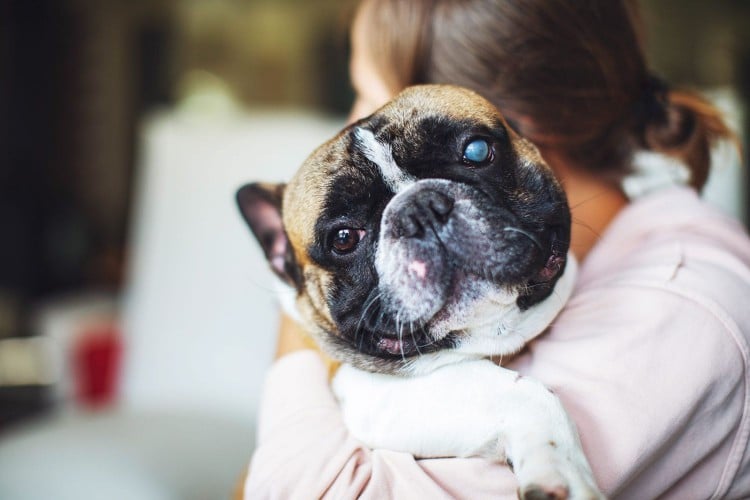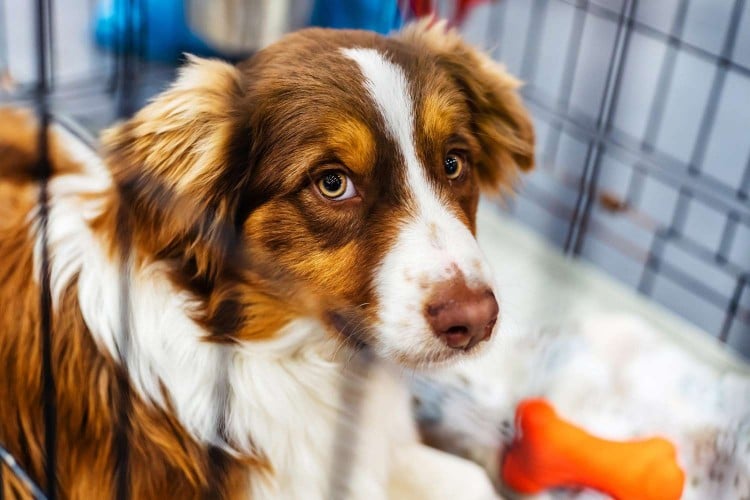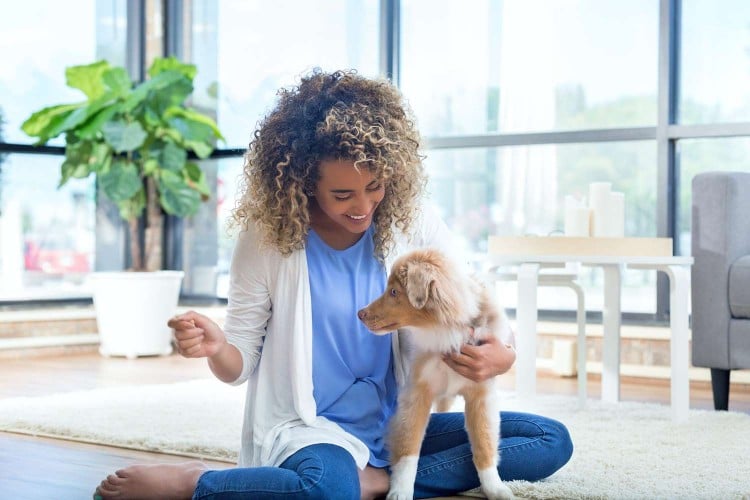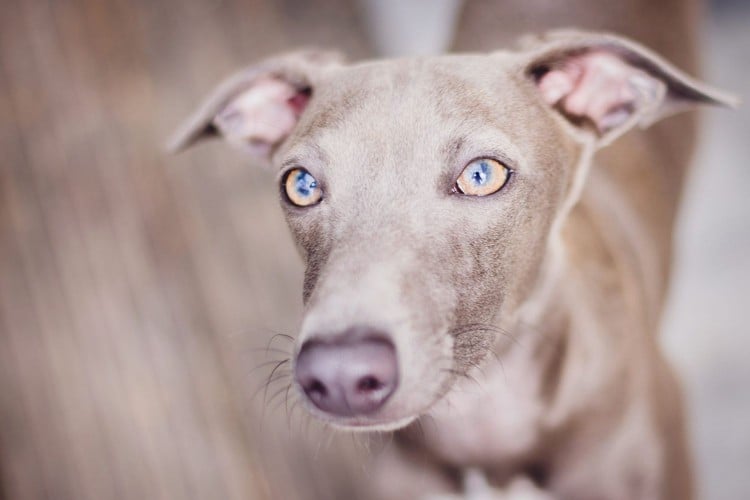We independently evaluate all recommended products and services. If you click on links we provide, we may receive compensation. Learn more.

Blindness in dogs can come on gradually or completely out of the blue depending on the cause. Either way, learning that your dog is suffering from vision loss can be heartbreaking. If you've stumbled upon this article, the odds are your mind is swirling with questions about what this means for your dog's quality of life and for you as a caretaker.
If you are thinking of adopting a dog that has experienced vision loss or impairment, or the dog you already have at home has an accident or condition that has led to some form of blindness, it's important to understand how the care you provide your pet will need to change. Read on to learn more about how to spot the early signs of blindness and what you can do to help your pup cope with their new impairment.
Signs of Blindness in Dogs
Physical Changes
- Cloudy eyes
- Spots in the eye
- Pupils don't dilate normally
- Swelling or redness around the eyes
Behavioral Changes
- Bumping into things more frequently
- Anxiety in new environments or when approached
- Less interest in activities they used to get excited about
- Not making eye contact
- Avoidance of stairs and furniture
The best way to find out if your dog is truly visually impaired or going blind is to promptly seek veterinary care for an evaluation and testing when you notice any abnormalities with your dog's eye(s) or signs of vision loss. Many causes of vision loss can be halted before the dog goes completely blind, or even reversed.
6 Helpful Strategies for Living With and Caring for a Blind Dog
If the case is that your pet's vision likely cannot be restored, your vet can provide you with ideas to help your dog cope with their changing senses and equip you with the information you need to adapt your own lifestyle to properly care for your dog. As you work on altering your pet's care, here are a few solutions to keep in mind.
1. Create a Predictable Environment
One of the best things you can do for your dog who's recently suffered from vision loss is create a familiar environment, according to Lisa Radosta, DVM, DACVM, at Florida Veterinary Behavior Service and co-founder of Dog Nerds. For starters, that means you should avoid changing the floor plan of the house. This will allow your blind dog to roam the house without feeling anxious about getting hurt. Over time, with some trial and error, your pup will memorize where everything is and be able to avoid any hazards.
Next, make sure that their food and water bowl is kept in the same place so that they can easily access it at all times. Use textured mats and rugs to mark locations your dog needs to pay attention to, such as where his food and water bowls are or areas near obstacles. Introducing these tools now will let your dog get used to them so he can rely on them as his vision deteriorates.
Practice tidiness. No more shoes or bags left in the middle of the floor! Keep walkways and areas where your dog frequently goes clear and free of trip hazards.
Make sure that stairways are well lit, and turn lights on when your dog is moving through the house or up and down stairs at night. In the early stages of blindness, many dogs lose their night vision but can still see in well-lit areas. Another trick is to use glow-in-the-dark tape to mark potential hazards such as a step in a doorway or to outline commonly used items such as doorways or the ramp your dog uses to get on the bed.
2. Communicate Effectively
It's important that you communicate with your dog frequently, Radosta suggests. "Use scents, your voice, and other sounds to help your dog know where he is in space," she says. Listening to your voice will help your pup figure out where you are and soothe them in stressful situations.
3. Keep Your Blind Dog Safe from Outside Dangers
Keep in mind that your dog will be at risk for certain dangers after losing his vision. Your pup may not be able to detect oncoming traffic or other threats as well as he used to, so you'll need to be on the lookout to help him avoid those dangers.
When taking your blind furry companion for a walk, stick to the same route so that he can familiarize himself with the path and know what directions to take. You might also want to invest in a blind dog harness, which will let others know that your dog can't see, especially when you're out on a walk. The contraption is equipped with a halo that prevents your pup from bumping into hard surfaces. Once he gets used to it, the harness can help increase your dog's confidence while being mobile.
Out in the yard, fill in holes and remove sharp objects. Make sure to monitor your dog at all times and practice good recall with verbal cues so you can guide him away from any dangers or put him on a leash if needed while you work on these skills.
4. Other Pets and Animals
Because your dog can no longer see, he is going to miss body language and visual signals that other animals give him. This can sometimes cause problems when interacting with other dogs. Always supervise interactions with a new or unreliable dog closely. If you have any doubts about how either dog will respond, keep them separate.
In some cases a sighted pet may take on the role of seeing-eye-dog for your visually impaired dog. These friendships are truly special to witness.
5. Provide Enrichment Opportunities
Blind dogs can still have fun! While fetch is not the safest game for a visually-impaired dog, your pup can still enjoy a rousing game of tug or parade around the house making a racket with a squeaky toy. Your dog will be able to seek out his favorite toys by sniffing for them.
Add scent-based games into your play routine. Play hide-and-seek in a familiar environment, or hide treats or a favorite toy for your dog to find.
Your blind dog will still enjoy training time, too. Teaching new tricks and behaviors may require you to get creative in your training method, as your dog won't be able to see hand signals, body language, or a lure. Experiment with clicker training and shaping, and teach verbal cues for behaviors that your dog already knows from a hand signal from his sighted life, if applicable.
6. Practice Patience
While taking care of your blind dog definitely takes work and time, the extra effort now will be worth it in the long run. You may sometimes feel frustrated with your dog's clumsiness or confusion, but remember that he is doing his best. Most dogs adjust to their new normal very quickly and thrive in a familiar environment. A bit of patience and love goes a long way in making sure they live a happy and fulfilled life, and these special pups are so worth it.





